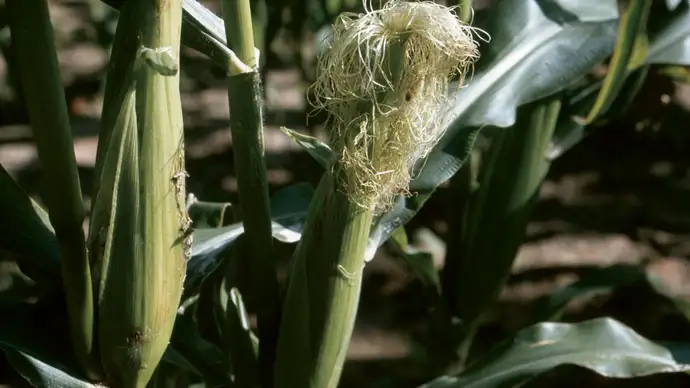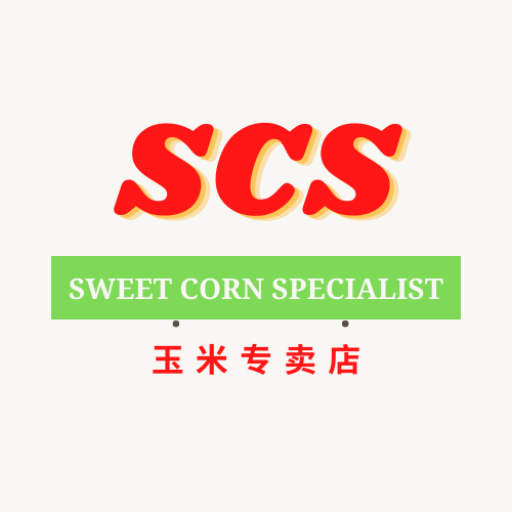The History of Sweet Corn
Corn was first domesticated by native peoples in southern Mexico about 10,000 years ago. Modern corn is believed to have been derived from the Balsas teosinte (Zea mays parviglumis), a wild grass. Its culture had spread as far north as southern Maine by the time of European settlement of North America, and Native Americans taught European colonists to grow the indigenous grains.
Since its introduction into Europe by Christopher Columbus and other explorers and colonizers, corn has spread to all areas of the world suitable for its cultivation. It is grown from 58° N latitude in Canada and Russia to 40° S latitude in South America, with a corn crop maturing somewhere in the world nearly every month of the year. It is the most important crop in the United States and is a staple food in many places.
Teosinte looks nothing like modern corn. A wild grass, the cob is only 19 millimeters long, and the five to 10 kernels are tough, requiring repeated hammering with a hard object to break open. Once open the kernels are dry and taste like raw potato, according to James Kennedy, a chemistry professor in Australia who has studied the plant’s evolution.
For thousands of years, farmers started selecting and saving teosinte kernels with desirable qualities: They were sweeter, more tender, and grew larger. By 4000 B.C. corncobs were already an inch long.
Modern-day corn is roughly 1,000 times larger than its ancient ancestor. For years the ancestry of corn was unclear. Corn, as modern humans know it, doesn’t grow in the wild. But in the 1930s, George Beadle discovered that teosinte and modern corn’s chromosomes are compatible.
In fact, teosinte can be bred with modern corn varieties to create viable teosinte-corn hybrids.
As more corn was bred by Native American farmers, they noticed that some were sweeter than others.
Sweet corn is the result of a recessive mutation in genes that control the conversion of sugar to starch. Native American tribes introduced it to European conquerors.
More recently, super sweet corn was developed in the early 1950s by a University of Illinois botany professor named John Laughnan.
Laughnan discovered that a certain gene in corn stored less starch but held four to 10 times more sugar.
Today, sweet corn is used throughout the food processing industry and in the fresh food market. Modern super sweet varieties can be as much as 40 percent sugar.
Corn continues to change today, with new varieties being tested regularly by breeders and seed growers. Researchers hope to develop the disease- and drought-resistant varieties in addition to other favorable attributes.
Corn is the No. 1 crop grown in the United States, with roughly 15.1 million bushels grown nationwide in 2016. Most of that corn is used in the production of ethanol. In fact, most corn grown in the United States is not directly consumed by people. It’s either used for industrial purposes, turned into high-fructose corn syrup, or fed to cattle.
The corn used for those purposes is known as field corn. Unlike sweet corn, field corn is harvested after it’s dried. The kernels are hard and the high starch and low sugar content make it unappetizing.
Physical description
The corn plant is a tall annual grass with a stout, erect, solid stem. The large narrow leaves have wavy margins and are spaced alternately on opposite sides of the stem. Staminate (male) flowers are borne on the tassel terminating the main axis of the stem. The pistillate (female) inflorescences, which mature to become the edible ears, are spikes with a thickened axis, bearing paired spikelets in longitudinal rows; each row of paired spikelets normally produces two rows of grain. Varieties of yellow and white corn are the most popular as food, though there are varieties with red, blue, pink, and black kernels, often banded, spotted, or striped. Each ear is enclosed by modified leaves called shucks or husks.

Share with your friends if you like this post. Tell us your opinion in the comment below.

